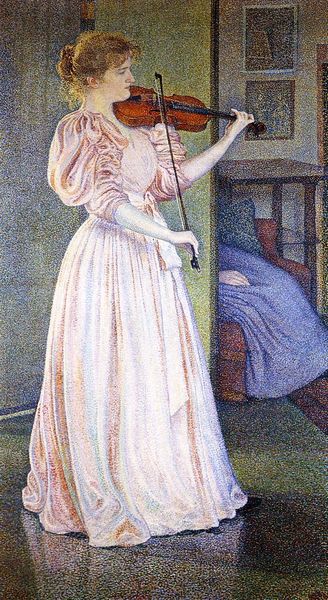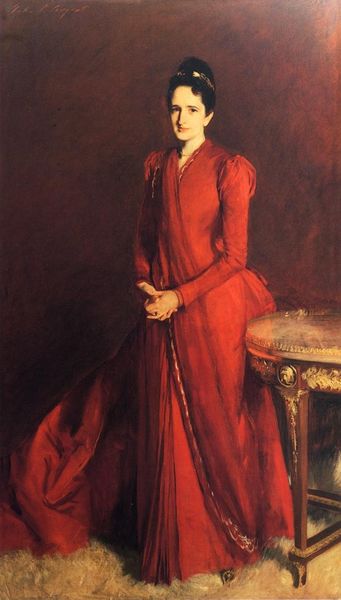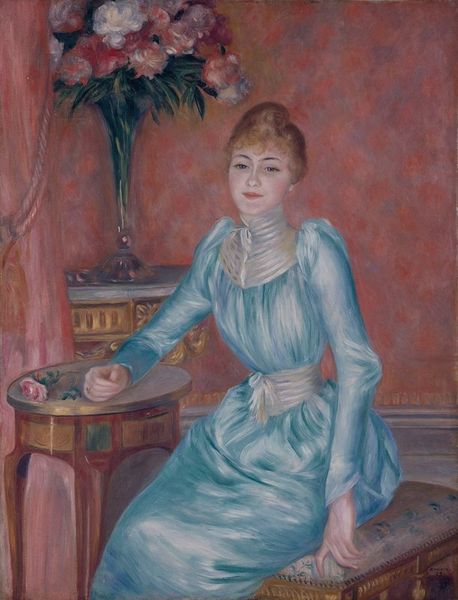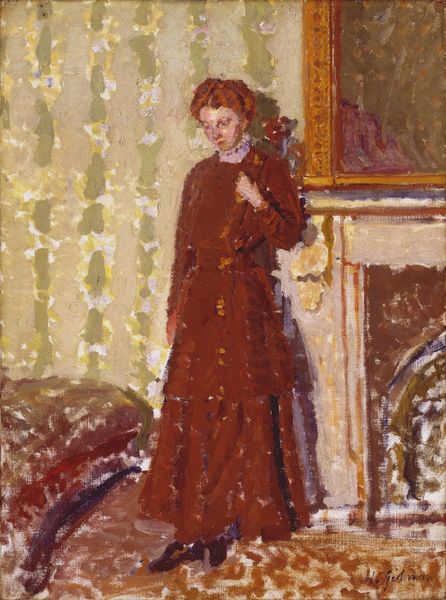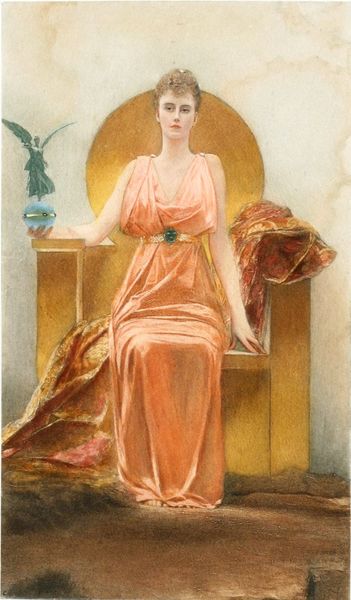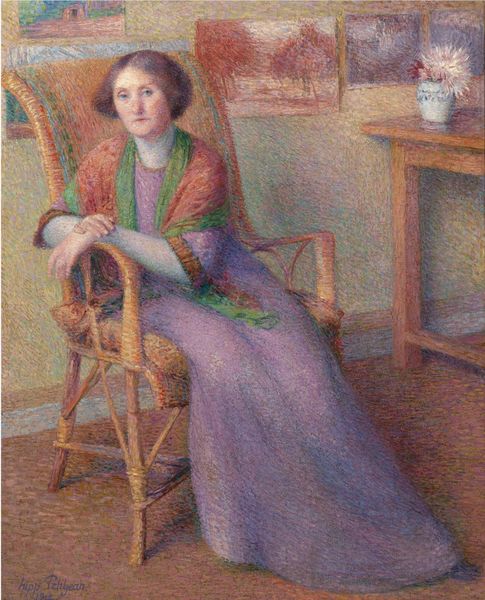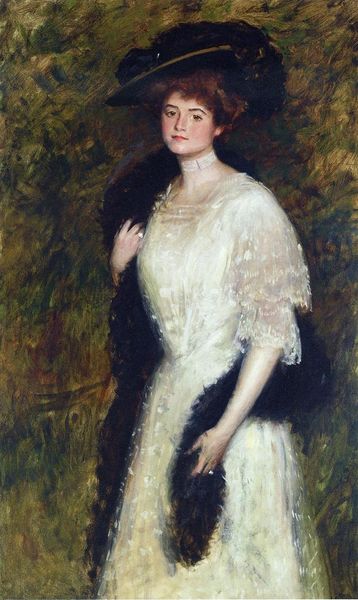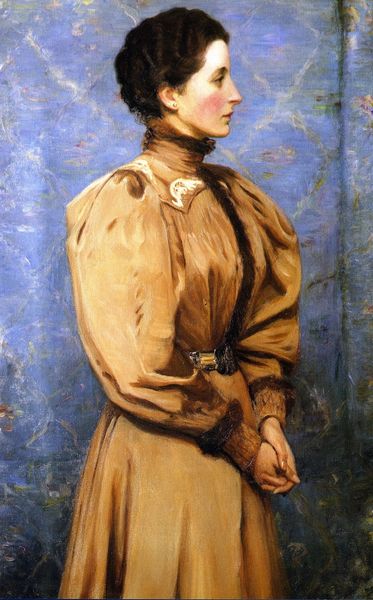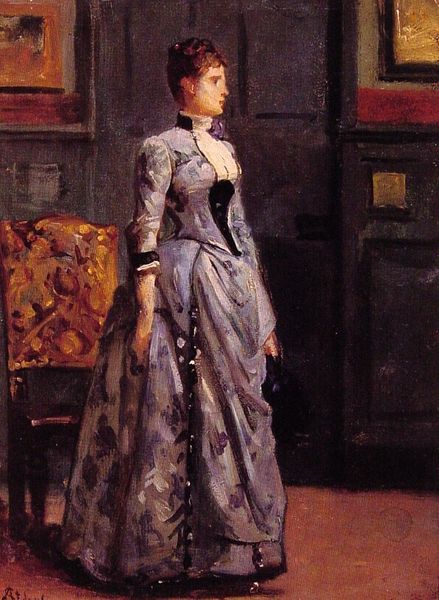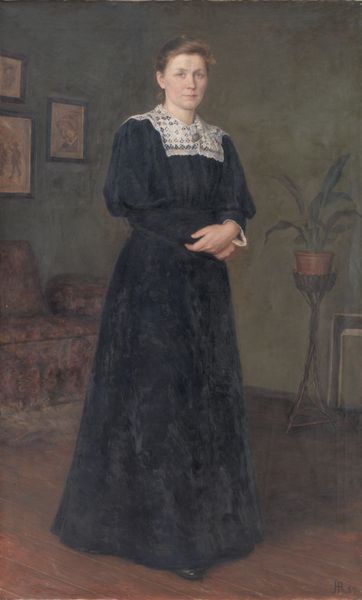
Copyright: Public domain
Editor: Here we have Théo van Rysselberghe’s "Portrait of Madame van Rysselberghe," painted in 1891. The optical mixing is so evident! The entire canvas vibrates. What compositional strategies is Rysselberghe employing? Curator: The divisionist technique immediately strikes the eye. Note the juxtaposition of complementary colors—blues and oranges—applied as discrete points. How does this interplay of hues affect the perceived form and texture of the subject’s dress? Editor: It almost feels as if the dress is illuminated from within, a sort of glowing presence. I can also note the patterning created on her dress with this unique brushwork! Curator: Precisely. Also consider how the artist manages to achieve tonal gradations despite the seemingly uniform application of dots. What semiotic potential can be extracted from this structural system? Is it simply optical, or does it attempt a form of psychological portraiture? Editor: I can't tell for sure, it's really impressive how distinct points merge so beautifully! Is there an effort to move beyond surface realism? Curator: Look at the structuring geometry within the work, particularly the subtle vertical and horizontal lines. Note how the subject’s figure, while seemingly naturally posed, fits almost perfectly into a constructed armature of spatial relations. Editor: The divisionism really comes into focus. I appreciate how this careful application creates such dynamism. Curator: Indeed. Reflecting on the relationship between visual theory and painterly execution reveals how art operates within structures, as both expression and sign. Editor: That really highlights how Van Rysselberghe achieves not only optical mixing, but a remarkable portrait using tiny strokes of color. Thank you for pointing this out to me!
Comments
No comments
Be the first to comment and join the conversation on the ultimate creative platform.
